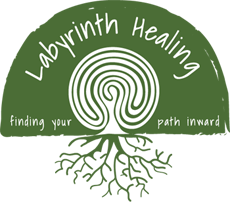Are you struggling with SAD?
Posted by on in Blog | 0 comments
Winter blues.
Seasonal depression.
People talk about going into a kind of hibernation, a slowing down-ness that happens after the rush of the holiday season.
And moods can dampen and darken during the cold months of winter.
But for some people, winter is a season marked by full blown symptoms of depression that happen every year like clockwork—low mood, lack of interest in previously beloved activities, changes in appetite and weight gain, and disruption in sleeping patterns.
In more severe cases, this depression can bring on feelings of hopelessness and even thoughts of suicide.
Did you know that there’s actually a name for this kind of depression—the kind that is specifically linked to season? And that it ever-so-aptly named SAD?
What’s SAD?
 SAD, or seasonal affective disorder, describes a kind of depression that happens year after year, at the same time each year, with symptoms that remit or go away once the season changes.
SAD, or seasonal affective disorder, describes a kind of depression that happens year after year, at the same time each year, with symptoms that remit or go away once the season changes.
It is classified as a type of major depressive disorder.
Researchers and clinicians have been talking about season-specific depression since the 1970s and 1980s, and Norman Rosenthal was the first to write a book about it.
The book, Winter Blues, is now in its fourth edition and remains a popular resource for people who suffer from SAD.
While the diagnosis was first received with some skepticism by the medical community, it is now included in diagnostic manuals for physicians and mental health professionals.
Although SAD shows up most often during the winter months, some people experience SAD during the summer, too.
 When this happens, it’s called summer blues or summer depression.
When this happens, it’s called summer blues or summer depression.
One theory about what causes SAD is the diminished exposure to daylight.
The shorter days and overcast skies of winter can leave us feeling like we’re living in a gray, sunless room all the time.
So it’s not surprising, then, that studies show that SAD is more common in people who live in northern latitudes, such as Alaska, New York, and Britain, compared with people who live closer to the equator, like Florida.
Some theorists have proposed that SAD could be a kind of evolved response, similar to a hibernation response that is designed to preserve and protect energy levels and resources during the colder winter months.
Treatment for SAD
 Since SAD is a form of depression, cognitive behavioral therapy and other kinds of counseling and talk therapy can offer some relief from symptoms.
Since SAD is a form of depression, cognitive behavioral therapy and other kinds of counseling and talk therapy can offer some relief from symptoms.
Some people also find that anti-depressant medication, such as SSRIs, can help alleviate symptoms.
Studies show that light therapy (also known as phototherapy) , which involves daily exposure to full spectrum, bright light, provides relief for many people who suffer from SAD.
Caution should be used with light therapy if someone has a diagnosis of bipolar disorder, as this form of treatment can exacerbate or trigger mania in some cases. Treatment options should be discussed with your physician or therapist.
Final thoughts
 Depression is a hardship that can come at any time of year.
Depression is a hardship that can come at any time of year.
SAD is unique in that it comes at the same time each season—predictable and regular, like clockwork. But at least this means that it is something you can plan and prepare for!
If you think you may be suffering from SAD, consider speaking to your physician or therapist about your options.
Whether your symptoms are mild, moderate, or severe, help is available!



